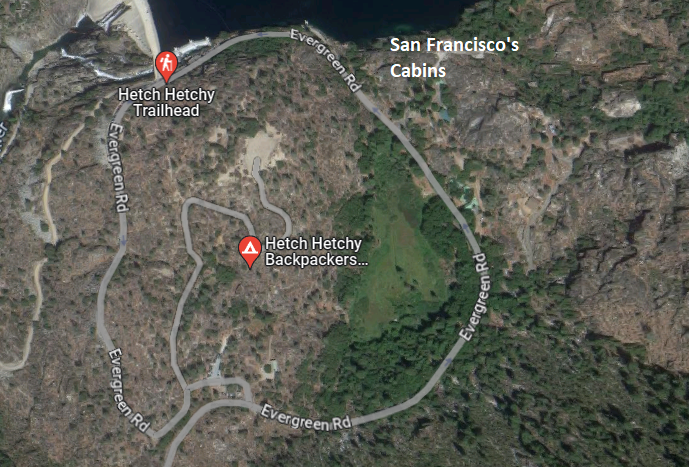
by Spreck | Aug 28, 2023 | Uncategorized
It is definitely not what Congress intended when it passed the Raker Act allowing San Francisco to build a dam in Yosemite’s Hetch Hetchy Valley.
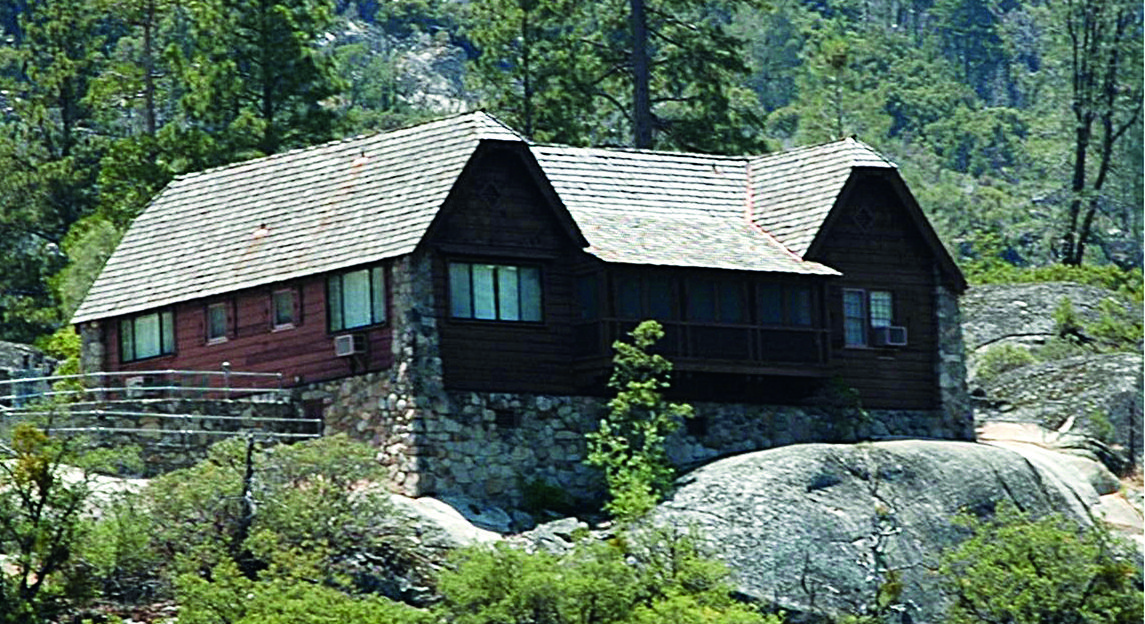
San Francisco’s “Cottage 1”, aka “The Chalet”, has a spectacular view of the Hetch Hetchy canyon.
Today’s San Francisco Standard published an article titled San Francisco City Officials Enjoy Exclusive Vacation Spot in Yosemite. Why? Reporter Josh Koehn describes San Francisco’s use of cabins at Hetch Hetchy as a “special perk unavailable to the general public”. City officials, their families and others anointed with the privilege of staying at the bunkhouse and cottages are provided access to Hetch Hetchy’s trails, fishing, birdwatching, waterfalls and sunsets that everyday park visitors do not have.
The authorization for use of these cabins is scant at best. The Raker Act allows “buildings necessary or properly incident to the construction, operation, and maintenance…”. While some use of the cabins may be business-related, most appears to be recreational given the prevalence of family members on the guest list uncovered by the Standard. (Restore Hetch Hetchy has asked the National Park Service for documentation of San Francisco’s permission to use the cabins, but was told it could not find any.)
Park visitors are only allowed to camp at Hetch Hetchy if they are leaving for or returning from a backpacking trip. This “backpacking” campground is poorly maintained and perhaps the bleakest in the park. And while the Raker Act required San Francisco to provide water to the campground, that water is non-potable – campers need to walk a mile or so to get to the closest drinkable water, located near the cabins.

It’s a bit of a trek from the dusty campground to the spigot near San Francisco’s cabins.
The current situation is a from cry from what San Francisco promised and Congress expected when the Raker Act was under consideration. It is fundamentally unfair and change is long overdue. Restore Hetch Hetchy believes the cabins should be converted for public use. The City officials queried seem to prefer that San Francisco retain its special privilege.
This and other limitations on public access are explained in Keeping Promises: Providing Public Access to Hetch Hetchy Valley, Yosemite National Park (Restore Hetch Hetchy, 2021) – please read if you have not already.
And if you haven’t had a chance to weigh in on the National Park Service’s outreach re future management of Yosemite, there is still time. Comments are due September 6.
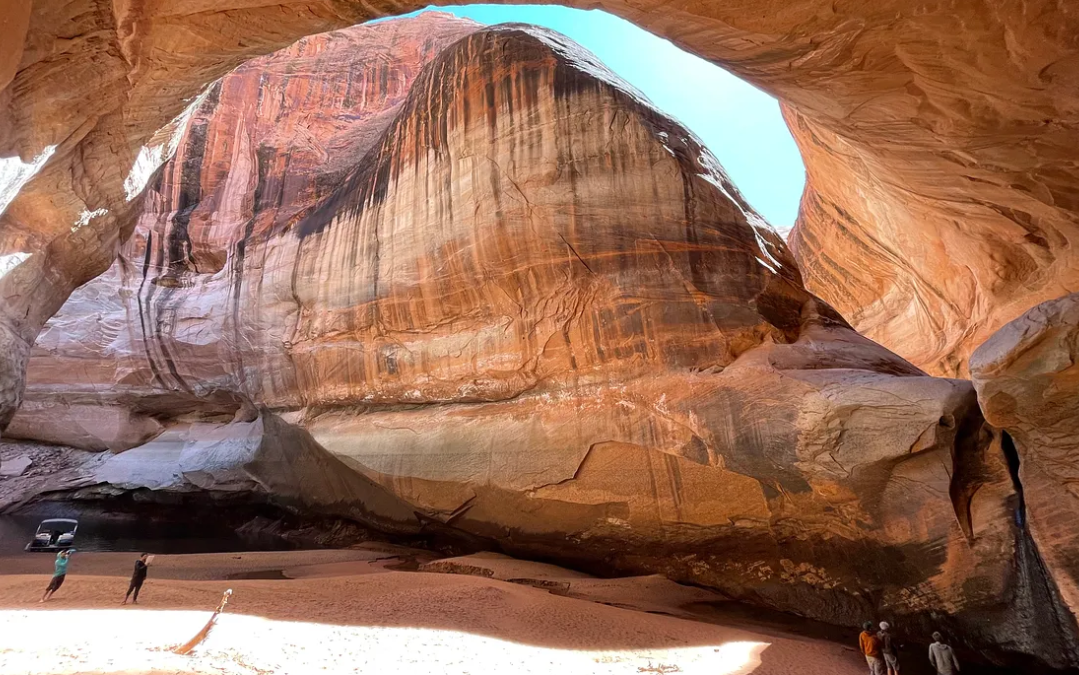
by Spreck | Aug 25, 2023 | Uncategorized
In a “Dog Bites Man” story, California farmers have proposed emptying Lake Powell, the reservoir behind Glen Canyon Dam, which would allow Glen Canyon to be restored.
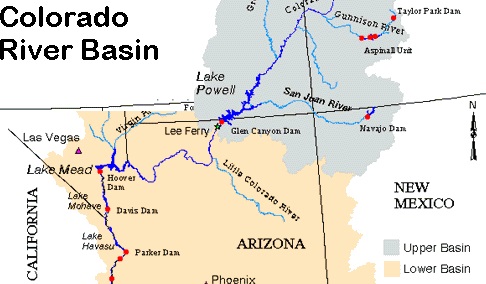
Colorado River flows seem unlikely ever to fill Lakes Powell and Mead, and farmers say evaporative losses at Powell outweigh any storage benefits.
The Imperial Valley farmers did not suddenly become afficionados of desert canyons. They are still interested in maximizing their water supply so they can grow as much food as possible. Their interest comes in the wake of diminishing water supplies on the Colorado River over past decades and the threat of cuts to their share of those supplies.
Evaporation is a factor in all reservoir systems and is largely dependent on the surface area of the reservoirs and the ambient temperature. Seepage is also dependent on size as well as the geology of the land below. Lake Powell is estimated to lose 860,000 of water acre-feet per year. Lake Mead loses a similar amount. Since neither reservoir seems likely to fill anytime soon, the idea of eliminating one of the reservoirs to cut down on losses makes intuitive sense.
The farmers’ math replicates what environmentalists have been saying for decades – that the loss of water due to evaporation and seepage at Glen Canyon make the Colorado River’s water storage system less reliable – i.e. the dam loses water.
Analyzing this fundamental question is not a simple matter, in part because whether Glen Canyon Dam improves or diminishes water supply reliability depends on future flow patterns. Perhaps not surprisingly, risk averse government engineers have not addressed this question to date. It would be nice if they had responded to those pesky environmentalists, but the Imperial Valley farmers will be harder to ignore.
There are other issues at play, besides water supply and restoring Glen Canyon. The city of Page, Arizona, (population 7,247) draws water directly from Lake Powell – what will its fate be if the lake is emptied? How would overall hydropower generation be affected if more water were stored in Lake Mead and none in Lake Powell – and how might the upstream communities who lose hydropower be compensated?
Let’s crunch the numbers to compare water supply, hydropower and environmental benefits while addressing how communities can work together at Glen Canyon. Let’s do it at Hetch Hetchy as well. We don’t need to live with mistakes of the past.
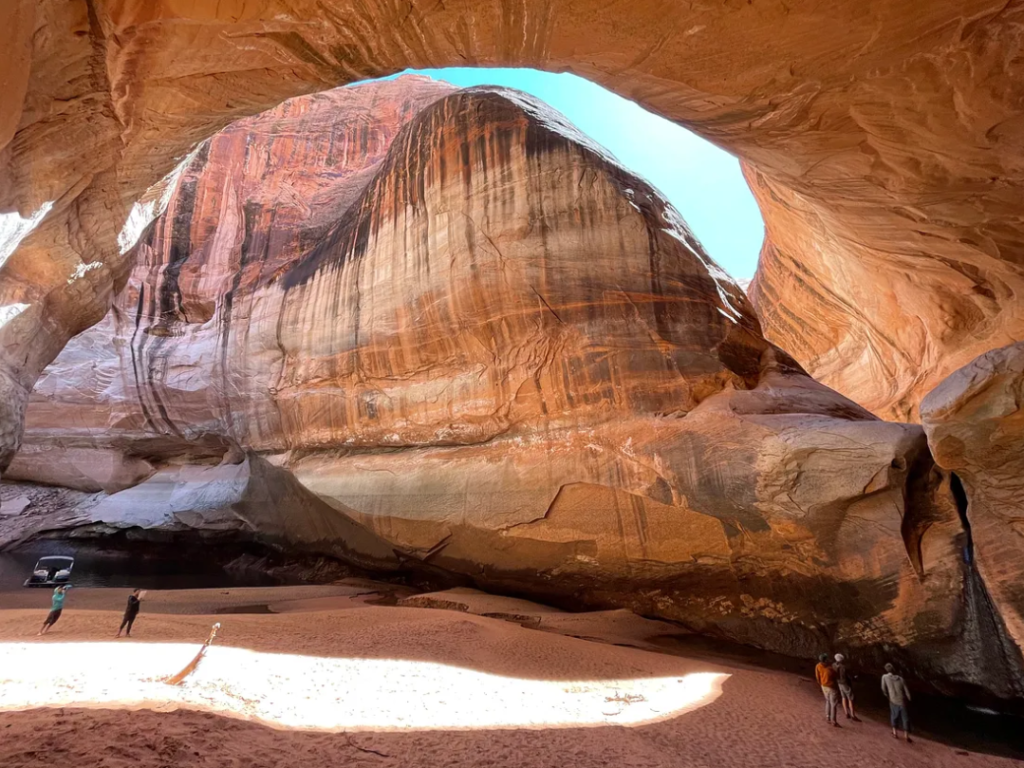
One of Glen Canyon’s many side canyons.
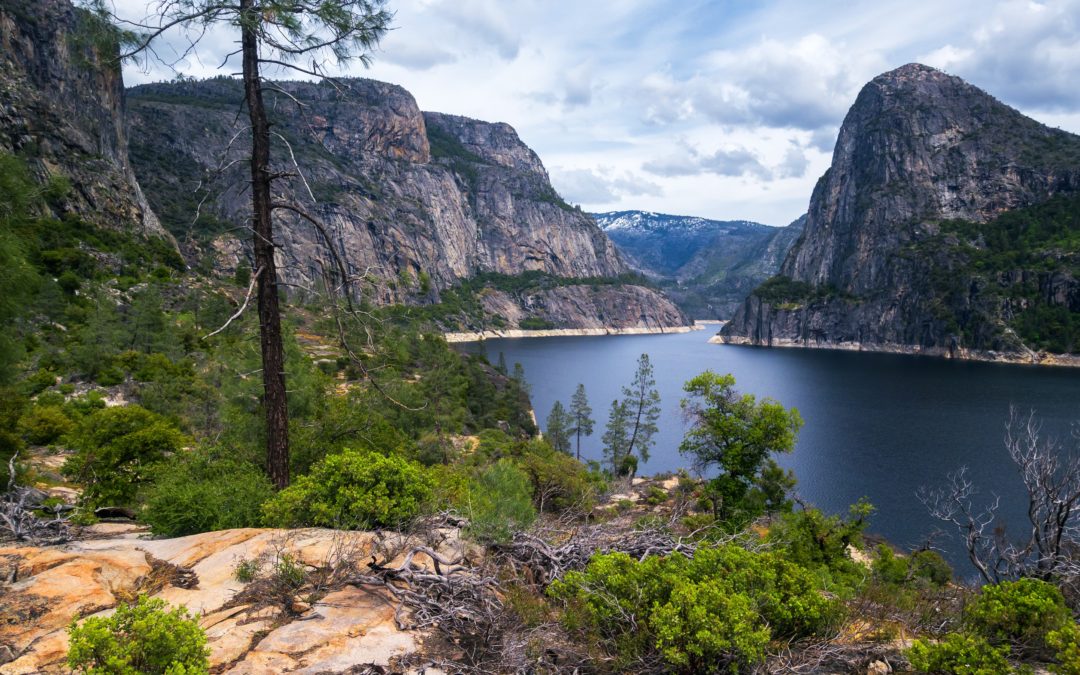
by Spreck | Aug 13, 2023 | Uncategorized
Christopher Reynolds of the Los Angeles Times wrote a wonderful article on Hetch Hetchy a few weeks ago. (The article seems to be fully available, with stunning pictures, without a subscription – if not, Lima News in Ohio has published a text only version.)
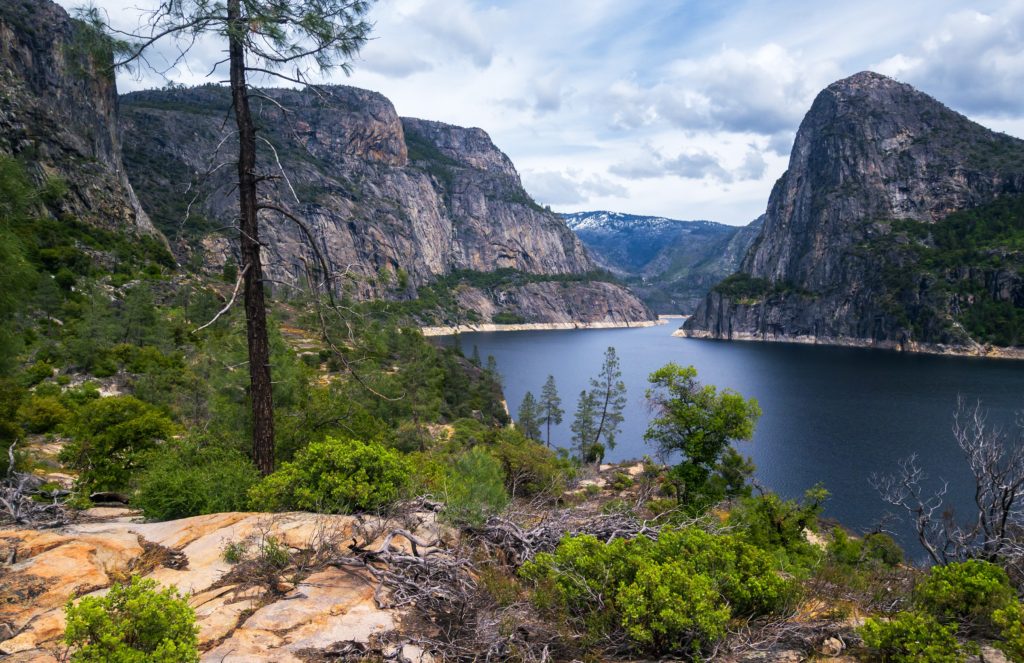
View from the trail to Tueeulala and Wapama Falls. Ambitious hikers may go all the way to Rancheria Falls. Photo: Joe Braun
The National Park Service counted 9873 cars on the narrow Hetch Hetchy Road in June, the highest monthly total in more than 30 years. Hetch Hetchy’s newfound popularity is no doubt due to a combination of factors – booming waterfalls, longer hours of permissible access, closure of the Big Oak Flat entrance for part of the month, and historically long lines elsewhere in Yosemite.
Some friends told us that “Even Hetch Hetchy was crowded. I guess that’s a good thing.” Retired ranger Laurel Munson Boyers seemed to disagree. She told the LA Times “As a local, I hope you won’t paint too rosy a picture.”
At Restore Hetch Hetchy, we are indeed happy to see more people. But we have to get it right.
Restore Hetch Hetchy needs people to go to Hetch Hetchy, to experience what is there and to imagine what is possible with restoration. But we don’t want it to be overrun. It’s critical to find ways to make Hetch Hetchy work for park visitors while protecting the area. One solution is to provide public transportation along the Hetch Hetchy Road – the Yosemite Area Regional Transportation System provides service through all of Yosemite’s other four entrances..
One nitpick: Reporter Christopher Reynolds states that access is limited “by order of the San Francisco Public Utilities Commission” with respect to camping, swimming and boating.
Restore Hetch Hetchy sees it a differently. We contend that the National Park Service has been overly deferential to San Francisco to the point of violating the terms Congress set in place when it passed the Raker Act allowing the valley to be dammed. We are engaged in cooperative discussions to improve access but are exploring legal and legislative solutions as well. Stay tuned.
Finally, we do appreciate Reynolds plugging two of our favorite books – Becky’s McCall’s profusely illustrated history “In Old Hetch Hetchy,” and “The Battle Over Hetch Hetchy” (2005) by Robert W. Righter.
Righter’s book explains how damming Hetchy Hetch has shaped modern environmentalism, says “the story has no equal” and is “an example of what should not be done to a scenic mountain valley”. Restore Hetch Hetchy agrees.
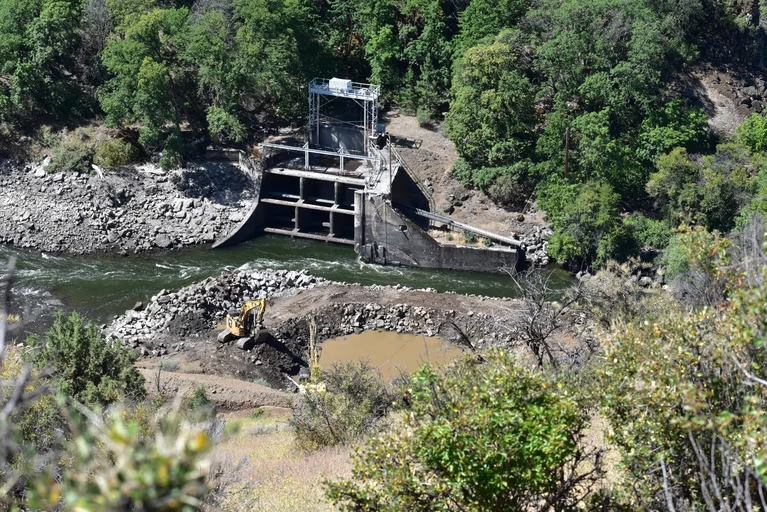
by Spreck | Jul 23, 2023 | Uncategorized
Dam removal on the Klamath River has begun at last.
Crews have largely demolished Copco 2, the smallest of the 4 dams on the chopping block. The reservoirs behind Iron Gate, Copco 1 and J.C. Boyle will be drawn down next winter allowing further dam removal to begin in spring of 2024. Oregon Public Broadcasting has provided a nice summary of how the dam removal process will work.

Remnants of Copco 2 – the smallest of the Klamath Dams. Photo Juliet Grable / JPR
The impetus for removal of the 4 Klamath Dams is the 2002 “fish kill”, when tens of thousands of spawning salmon died as a result of degraded water quality and high temperature on the lower reaches of the river.
Dam removal will help salmon in two ways. The nutrients in runoff from upstream farms will no longer “cook” in the hot reservoirs, so water quality will be improved. In addition, salmon will have access to additional spawning habitat. Truly measuring the success of the program will take some time, but water quality measurements will come soon and speculation will be impossible to resist.
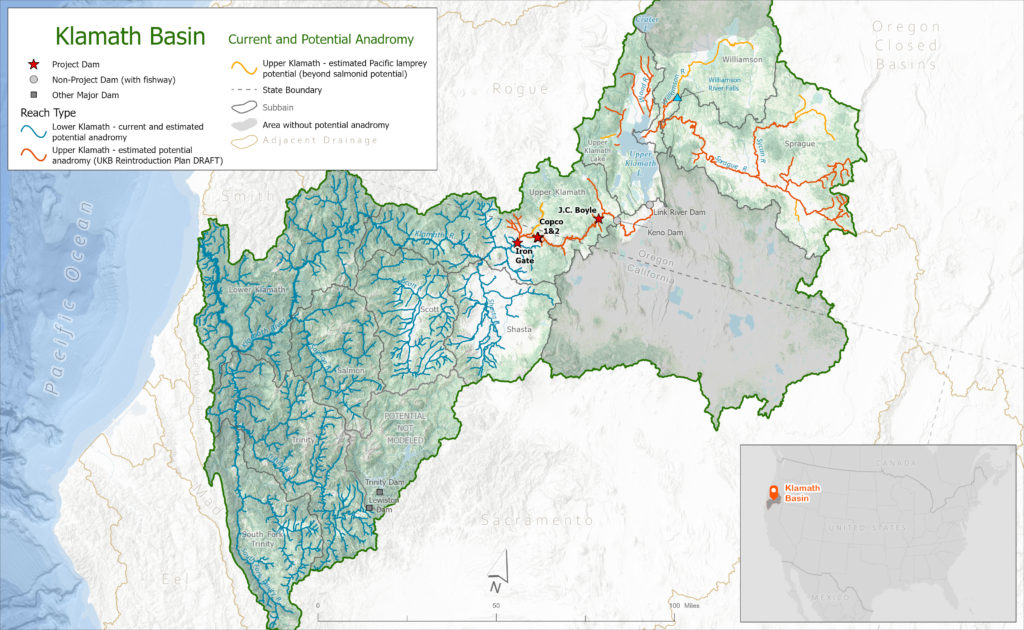
The Klamath dam removals are all near to the Oregon-California border, downstream of the farms in the Klamath Basin. The Karok, Yurok and Hoopa Valley reservations are closer to the coast. The middle section of the river is popular for fishing, rafting and swimming. It is all beautiful country. (Click image to enlarge)
Restoration of the Klamath’s salmon populations are particularly important to tribes on the lower Klamath – the Hoopa Valley, Yurok and Karok Tribes have depended on salmon for sustenance and culture for millennia.
Dam removal will provide benefits to tourists as well. If you haven’t been to the Klamath, check it out. The 120 mile drive from Highway 5 to Weitchpec is spectacular. The fishing, swimming and rafting are all great and there are oodles of campgrounds.
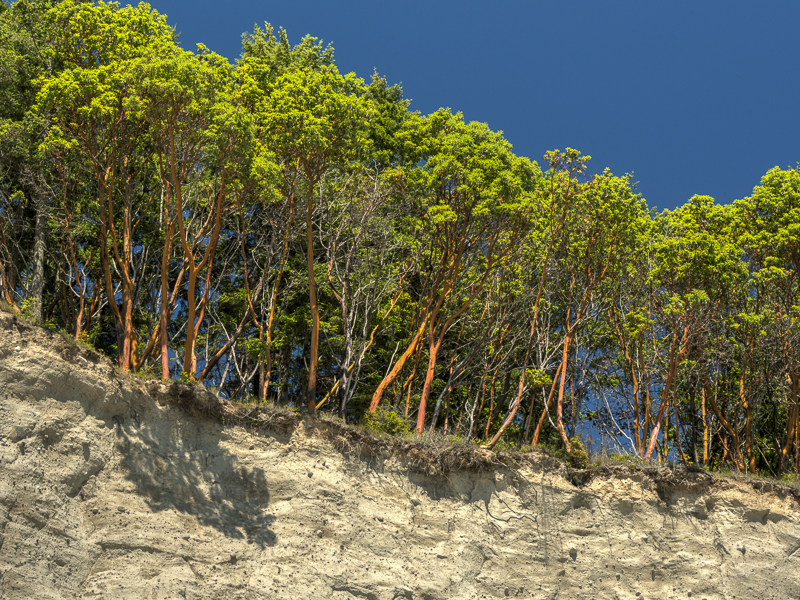
The stands of giant madrone trees along the Klamath are especially impressive.
Unlike Hetch Hetchy, the Klamath dams are not part of any municipal or agricultural water supply system – they are all downstream of the farms in the Klamath basin. Roughly 696 gigawatt-hours of hydropower will need to be replaced annually – about twice the amount that will be lost when Hetch Hetchy is restored.
Replacing electric power costs money, but it’s institutionally simpler than improving water supply and it’s easier to find alternatives. Many water agencies in California have reaped tremendous financial and supply benefits by working together. San Francisco, however, has not pursued opportunities to work cooperatively with the Turlock and Modesto Irrigation Districts or others who use the lion’s share of the Tuolumne River – something it should be doing even though it has no intention (presently) of giving up Hetch Hetchy Reservoir.
At Restore Hetch Hetchy, we recognize that our challenge, at least politically, is greater than that of the Klamath tribes and restoration advocates. But it’s wonderful to see dam removal and such a restoration program finally underway.
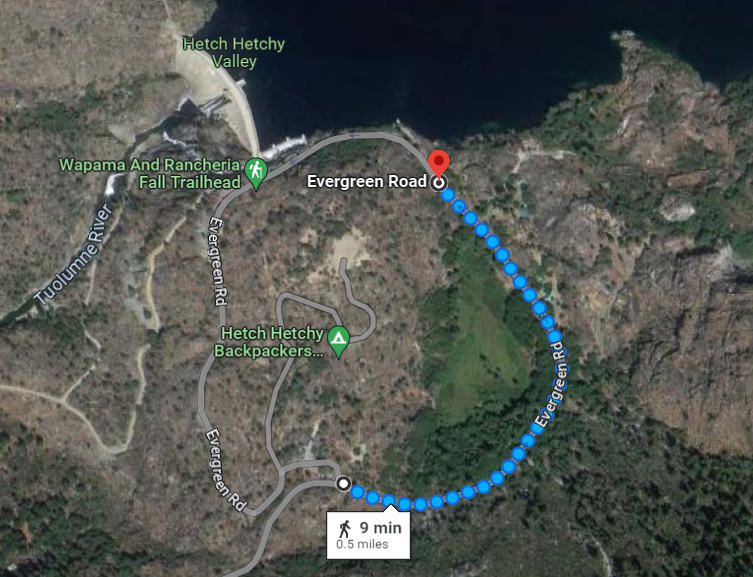
by Spreck | Jun 23, 2023 | Uncategorized
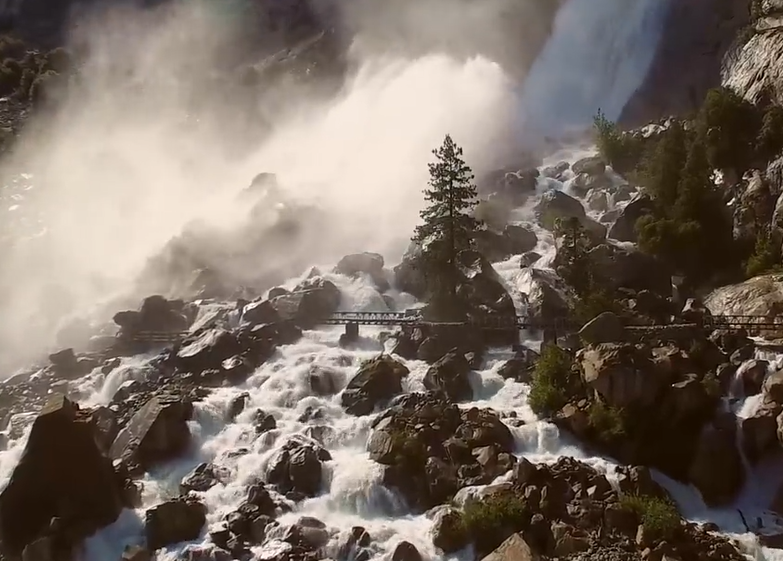
The bridges across Wapama Falls, in their current state, are too dangerous to cross at high water. San Francisco is required to maintain this trail – and thus the bridges – as required by the 1913 Raker Act.
The National Park Service is in the process of updating its management agreement with the San Francisco Public Utilities Commission.
The most recent version of the agreement, completed in 2019, has the sexy title “Memorandum of Agreement Between City and County of San Francisco San Francisco Public Utilities Commission and National Park Service Yosemite National Park for Comprehensive Management of Watersheds within Yosemite National Park Supplying the San Francisco Regional Water System”.
We’ll call it the MOA.
Most of the 2019 MOA is about watershed protection and security (some of the security elements are redacted in the public version). Restore Hetch Hetchy believes the 2019 document is inadequate in several respects. We asked the National Park Service to release a public draft before the 2023 version is finalized. The NPS declined.
So we have written to the National Park Service and the San Francisco Public Utilities Commission expressing our view that the 2019 document does not comply with the law in several respects. The letter is pretty self-explanatory, but we’ll summarize it here:
- The NPS should not restrict access to Hetch Hetchy based on security concerns. If the SFPUC is concerned about security, it should fund additional supervision or take other measures that do not restrict the public from visiting its national park.
- Constructing and maintaining the trail that crosses Wapama Falls is San Francisco’s responsibility under the Raker Act. The bridges need to be safer at high water. After all, hikers have been swept off to their deaths when the flow of Falls Creek is high.
- The Raker Act also requires that San Francisco provide water to the campground at Hetch Hetchy – presently relegated to use only by backpackers. The water provided is not potable. Restore Hetch Hetchy believes this is unacceptable.
- The boat ramp at Hetch Hetchy is unusable at present. The NPS may need to use it for emergencies as they have in the past. It should be fixed.
- The NPS should not hand out the SFPUC’s materials to visitors. Also, the NPS policy of supporting the SFPUC’s (rare) filtration exemption is not permitted by the Raker Act.
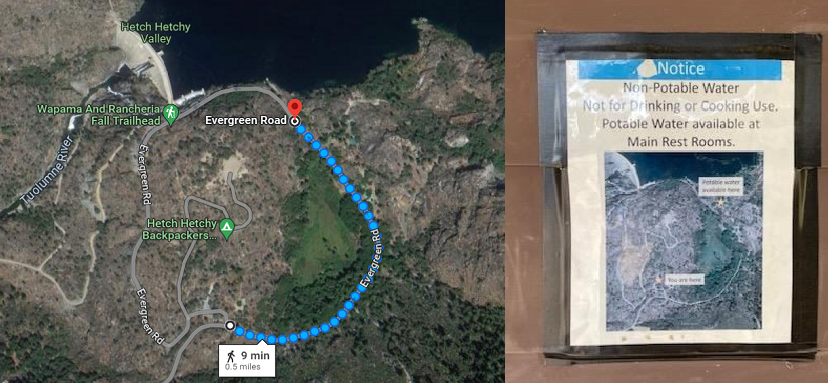
Anyone staying at the Hetch Hetchy campground must walk almost a mile to get drinkable water.
We have not heard back – from either the NPS or the SFPUC. We will keep you posted.














